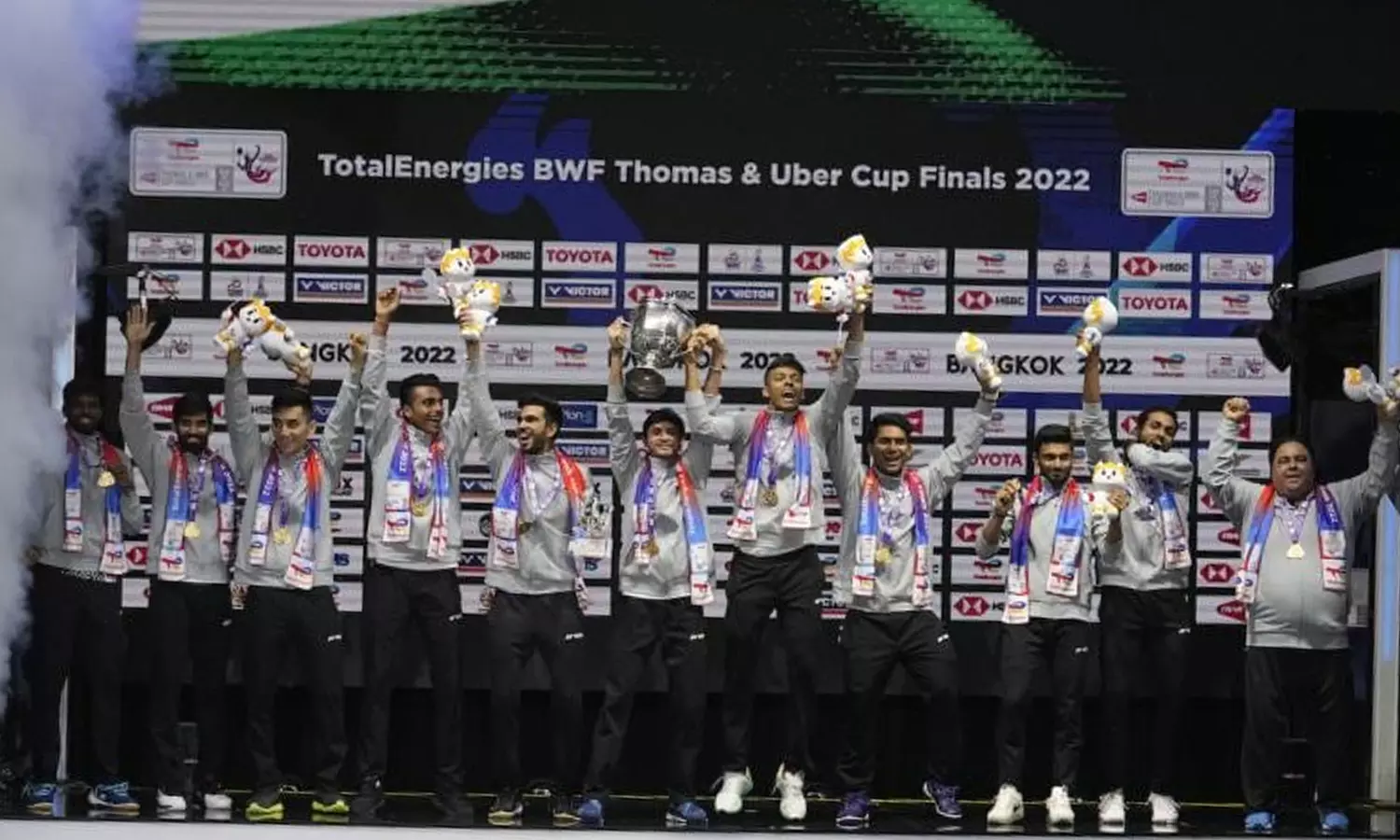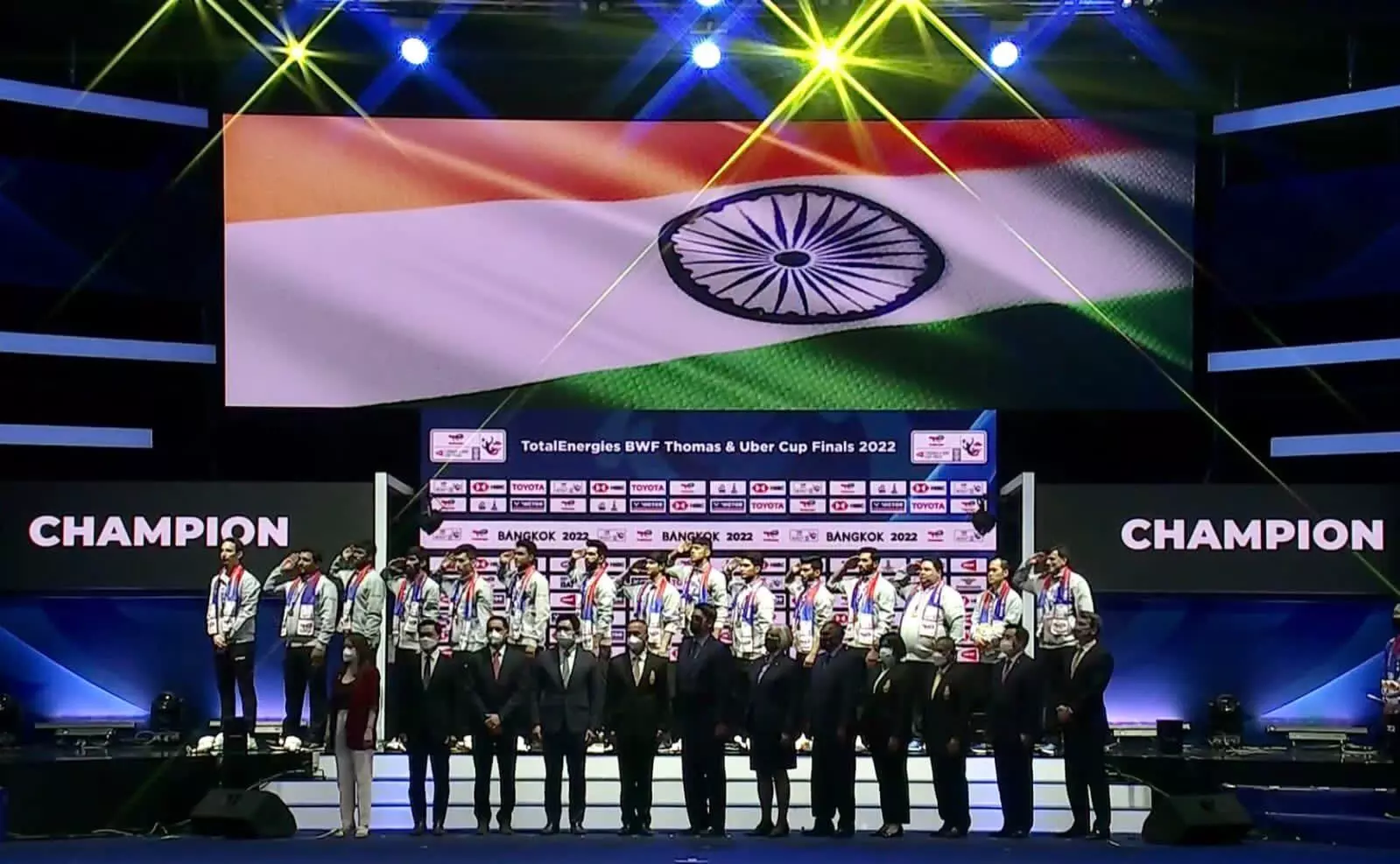Badminton
All that glitters not gold in Indian badminton — Lessons from Thomas Cup win
While India winning the Thomas Cup after a 73-year-long wait is historic, it doesn't equate to world domination in the sport. Here's why this win does not paint the entire story of badminton in the country.

India win Thomas Cup (Source: Screenshot from BWF YouTube)
When the IPL - the annual extravaganza of India's favourite sport - was entering its most exciting phase of the season last week, Indians were going gaga over something else.
We were celebrating a historic win in the Thomas and Uber Cup - one of badminton's most prestigious competitions, at par with any other World Cup.
The irony was that despite India being known for its individual talents, this significant moment in India's badminton history came because we had the best team - balanced and pumped-up - to get the job done. And before I let my cynical self take over, let us understand why this is such a big win.
In the span of the last week, the Indian sporting circuit has been full of action. In Istanbul, Turkey, the women's boxing team secured three world medals. A dauntless and determined Nikhat Zareen crowned herself as the World Champion.
Meanwhile, there was quite a buzz around the wrestling selection trials for India's Commonwealth Games teams. Satender Malik, a 125kg wrestler, slapped a senior referee over a disagreement - creating quite the hullabaloo.
But nothing came close to the achievement of a group of 10 shuttlers who became one in a WhatsApp group prophetically named "It's coming home."
The enormity of India's Thomas Cup win
For one, it was a rare feat by the young'uns starring Lakshya Sen, Kidambi Srikanth and HS Prannoy and Priyanshu Rajawat at the Impact Arena, in Bangkok. Key doubles players Satwiksairaj Rankireddy and Chirag Shetty, MR Arjun, Dhruv Kapila, Krishna Prasad and Vishnuvardhan Goud also displayed their true potential, egged on by a hoarsely cheering Indian squad.

To realise why India's win at the Thomas Cup is this significant, we need to look at the fact that this is India's maiden triumph in 32 editions. That's more than seven decades of waiting for this trophy to make its way home.
But that is not all.
This competition is a priority for the best badminton teams like China and Indonesia, who pick their finest and train specifically for it. It's a matter of major national prestige. It's almost like a World Cup of badminton with the best going against each other.
So yes, I do congratulate this new generation of shuttlers who have shown India's badminton talent - but only as a team. This win does not paint the entire story of Indian badminton, no matter the glittering gold they now have.
Team success doesn't equate to world domination
On paper, it was a national team but out of the ten shuttlers, nine have roots in the famous Pullela Gopichand Academy. Of course, there's nothing wrong with this but we need to question what is it that Gopichand is doing right that has not yet spilled over to other academies?
Even India's most successful individual shuttlers PV Sindhu and Saina Nehwal were once the stars of the Gopichand Academy. It is not a good sign for Indian badminton which continues to look for an heir apparent to Sindhu in the women's singles.
Some names have certainly surfaced like Unnati Hooda, who at the age of 14 made her way into India's Commonwealth Games squad after a good show in the BAI trials. But she is yet to display promise at the senior level.
READ | Behind Unnati Hooda's success lies her father's unfulfilled dream
Also, a team's success does not mean we have finally paved the way for dominating the sport. This script of a team doing well in an Olympic sport is not new to India. Maybe with social media now part of everyday life, the magnanimity of any achievement is beyond expectations.
Back in my day, it was through newspapers, TV or radio that people gathered news. In those times, the pair of Mahesh Bhupathi and Leander Paes were making their name in the tennis' mixed and men's doubles events.
Known as Lee-Hesh, the pair reached the men's doubles finals of all four Grand Slams – winning the Wimbledon and French Open, eventually rising to World No.1 in the men's doubles rankings.
But while they did well as a team, they weren't the best in men's singles. And that is what the point of contention is.
Learning from the badminton model
As part of the sports fraternity, while we are celebrating this historic win, we also should not get carried away with it. This win in Bangkok has now grabbed the imagination of the next generation that with the right attitude and approach anything is possible - the sky is the limit.
But, for that, we need to start at a ground level and start building on this achievement and find ways to expand the horizon of badminton outside its traditional centre in Hyderabad. We also need to start concentrating on the second, third and fourth bests of all categories to build proper depth - across categories.
One way to do the latter is by focusing on team building. India has had a very individualistic approach to making good shuttlers. But this competition has given us a peep into what team building can do.
Players can push each other during tough times and be cheerleaders for their teammates. Also, it gives a sense of competition within the group, as well.
The lack of team building has resulted in negativity spreading and damaging individual prospects as well. Perhaps the most infamous case would be what happened to the shooting squad at the Tokyo Olympics. Despite having multiple number one and world medallists, the breakdown of team structure ended up in a disastrous show at the games - with them returning empty-handed, shattered.
But badminton has given a great working model for the role of team building in otherwise individual-centric sports. Perhaps it's time for other individual sports to also look at the role of team ethics in building successful groups and then routing themselves for graspable history.
